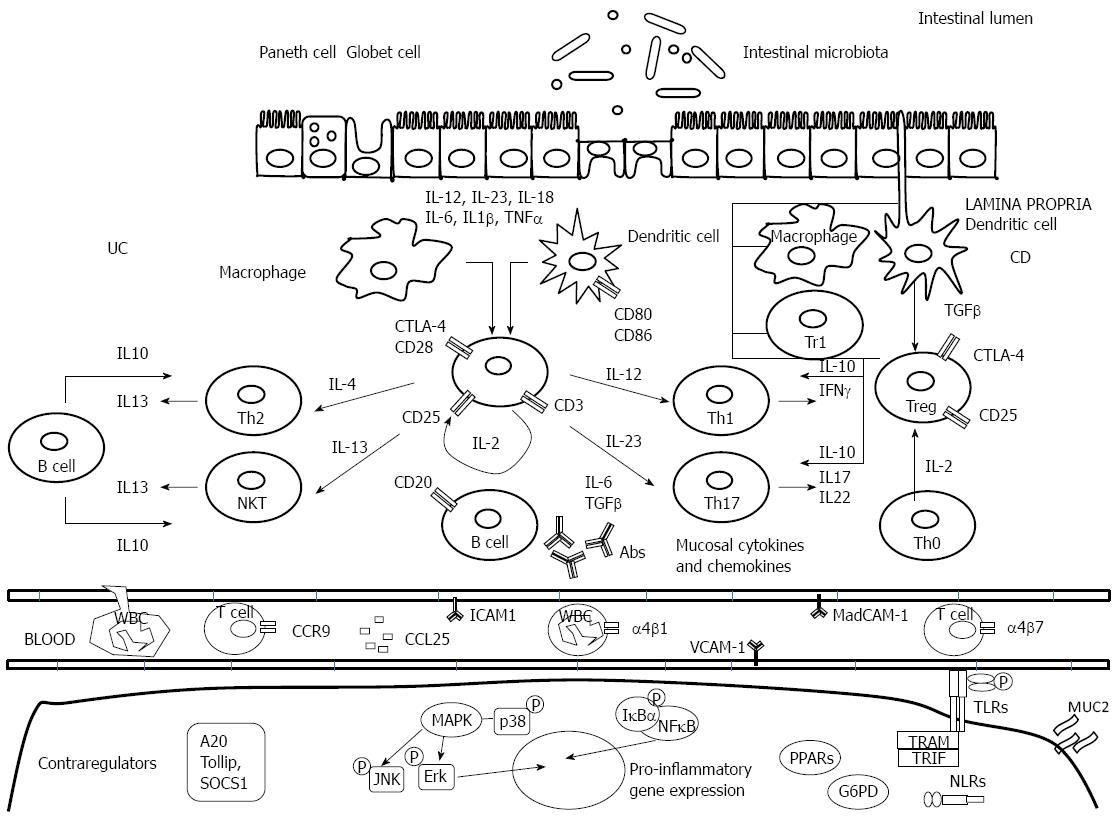Copyright
©The Author(s) 2015.
World J Gastroenterol. Nov 28, 2015; 21(44): 12519-12543
Published online Nov 28, 2015. doi: 10.3748/wjg.v21.i44.12519
Published online Nov 28, 2015. doi: 10.3748/wjg.v21.i44.12519
Figure 1 Inflammatory and regulatory pathways involved in inflammatory bowel disease pathogenesis.
Crohn’s disease (CD) is characterized by the generation of Th1- and Th17 T cell responses driven by the production of interleukin (IL)-12, IL-18, IL-23, IL-6 and tumor necrosis factor (TNF)-α by dendritic cells and macrophages. Th1-cells secrete IL-2, IL-17, interferon (IFN)-γ, and TNF-α. Ulcerative colitis (UC) is characterized by a Th2- T cell, and NKT response mediated by IL-5 and IL-13. T cell responses initiate an inflammatory cascade that involves endothelial activation, chemokine production, and white blood cell recruitment. Inappropriate triggering and maintenance of these pathogenic responses has been associated with innate immunity defects, e.g., lack of efficient control by anti-inflammatory cytokines such as IL-10 and transforming growth factor (TGF)-β. In the bottom of the figure, intracellular markers of activation are represented. Ab: antibody; CTLA-4: Cytotoxic T lymphocyte antigen-4; ICAM-1: Intercellular adhesion molecule-1; MAdCAM-1: Mucosal addressin cell adhesion molecule-1; VCAM-1: Vascular cell adhesion molecule-1; TLRs: Toll-like receptors; NLR: NOD-like receptor; NKT: Natural killer T.
- Citation: Quetglas EG, Mujagic Z, Wigge S, Keszthelyi D, Wachten S, Masclee A, Reinisch W. Update on pathogenesis and predictors of response of therapeutic strategies used in inflammatory bowel disease. World J Gastroenterol 2015; 21(44): 12519-12543
- URL: https://www.wjgnet.com/1007-9327/full/v21/i44/12519.htm
- DOI: https://dx.doi.org/10.3748/wjg.v21.i44.12519









